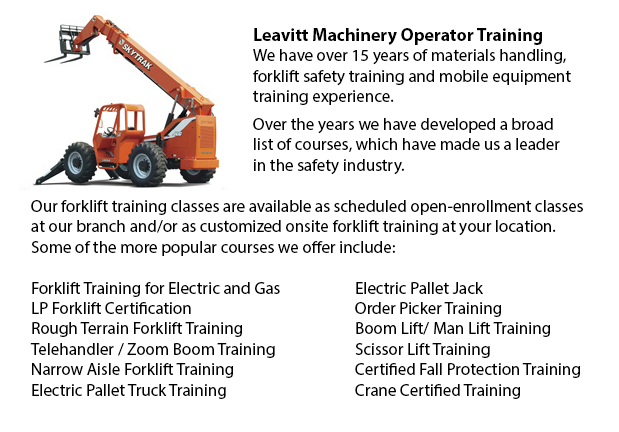
Ontario Telehandler License - The telescopic handler or telehandler is a frequently used machine in agricultural and industrial applications. This particular equipment is the same in look to a forklift and even functions in a similar way, though telehandlers are much more like a crane than forklift. It has a telescopic boom that could lengthen forward and upward from the motor vehicle. The boom has the capability to fit one of several accessories including pallet forks, a bucket, a lift table or muck grab.
Pallet forks are the most popular accessory meant for the telehandler. This equipment is normally used for transporting loads to and from areas which a standard lift truck will find inaccessible. Telehandlers are particularly useful for placing loads on rooftops for example, or for removing palletized cargo from with a trailer. A lot of the jobs which a telehandler could accomplish will otherwise require a crane and this machine could be expensive, not always time efficient and impractical.
The boom acts as a lever, extending and raising while bearing a load. Even if there are back counterweights, this might cause the telehandler to become more unstable. Therefore, the greatest advantage of the telehandler is likewise its greatest limitation. As the working radius increases, the lifting capacity lessens. The working radius is defined as the distance between the front of the wheels and the center of the load.
Like for instance, a telehandler with a 5000 lb capacity with the boom retracted can safely lift as little as 400 lb once it is completely extended at a low boom angle. The equivalent equipment that has a 5000 lb lift capacity and the boom retracted can support as much as 10,000 lb with the boom raised to 70 degrees. The operator has a load chart to be able to help determine whether a particular lifting task can be completed in an efficient and safe manner. This particular chart considers the height, the boom angle and the weight.
To be able to monitor the telehandler, they come equipped along with a computer that uses sensors. These sensors work to alert the operator, with some being able to cut controls to certain inputs if the limits of the motor vehicle are exceeded. Some telehandler kinds are also outfitted with front outriggers that are known as mobile cranes. These significantly extend the lifting capability of the apparatus while it is stationary.
-
Ontario Manlift Certification
Ontario Manlift Certification - The Elevated Platforms and Manlifts Certification course helps to provide the required training on the work practices, safe operating procedures, regulations and rules regarding the everyday activities for the operator... More -
Ontario Crane Training
Ontario Crane Training - Bridge cranes or overhead cranes are actually a type of industrial material handling crane making use of a line and hook mechanism that runs on a horizontal beam running along two widely separated rails. Various overhead cran... More -
Ontario Aerial Lift Train the Trainer
Ontario Aerial Lift Train the Trainer - The Aerial Lifts Train the Trainer Certification Program teaches trainers how to effectively train operators in safe industrial mobile machinery operation. Trainers are given in-depth instruction about aerial l... More -
Ontario Warehouse Forklift Training Classes
Ontario Warehouse Forklift Training Classes - The reason for warehouse training classes are to raise the awareness of common workplace dangers. The trainees will learn essential warehouse safety procedures. An emphasis is placed on paying attention t... More -
Ontario Forklift Training School
Ontario Forklift Training School - Forklift Training School - Industry and federal regulators have established the criteria for forklift safety training based on their current standards and regulations. Those wanting to operate a forklift must finish... More -
Skid Steer Loader Training in Ontario
The engine powered skid-steer loader consists of a rigid and small frame, equipped along with lift arms that could attach to lots of industrial tools and attachments to execute many labor saving jobs. Normally, skid-steer loaders are four-wheel drive... More -
Ontario Crane License
Ontario Crane License - Crane operators ought to be "credentialed", that means they ought to own a crane operator certification or license. Credentialing is considered a mandatory governmental requirement to be able to practice as an operator of a cr... More -
Ontario Forklift Operator Training
Ontario Forklift Operator Training - Forklift training is a prerequisite in North America and is intended to prevent workplace injuries and death. Forklift training offers driver training intended for forklift operators. Training programs teach the s... More

Forklift Certification Ontario
TOLL FREE: 1-888-254-6157
Toronto, Ontario
forkliftcertificationontario.com
Email Us
About Us


